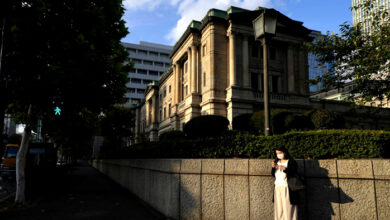Japan spent nearly $20 billion on yen intervention, a record amount.

TOKYO – Ministry of Finance data released on Friday showed that Japan spent up to a record 2.8 trillion yen ($19.7 billion) last week to prop up the yen by intervening in the foreign exchange market. This used up nearly 15% of the funds it has ready to use for intervention.
The amount was less than the 3.6 trillion yen that Tokyo money market brokers thought Japan would need to sell dollars and buy yen for the first time in 24 years to stop the currency from falling sharply.
Most people think that the ministry’s number, which shows how much was spent on currency intervention from August 30 to September 28, was all used for the September 22 intervention. It would beat the previous record for selling dollars and buying yen, which was 2.62 trillion yen in 1998. In November, the dates of the spending will be confirmed.
Related: Analysis: The weak yen is pulling Japan away from the radicalism of BOJ Kuroda.
Daisaku Ueno, chief forex strategist at Mitsubishi UFJ (NYSE:MUFG) and Morgan Stanley (NYSE:MS) Securities, said, “This was a big burst of intervention if it all happened in one day. “It shows how determined the Japanese government is to protect the yen.”
“But more intervention will have less of an effect as long as Japan keeps acting alone,” he said.
The intervention was done after the yen fell to a 24-year low of almost 146 to the dollar. It caused a sharp rise of more than 5 yen per dollar from that low, but the currency has since gone back down to around 144.25.
“Recent sharp, one-way drops in the value of the yen increase uncertainty and make it hard for businesses to make plans. ” “So it’s not good and bad for the economy,” At a meeting with cabinet ministers on Friday, Governor of the Bank of Japan Haruhiko Kuroda was quoted as saying.
According to foreign reserves data released on September 7, Japan had about $1.3 trillion in reserves, making it the second-largest country after China. Of this amount, $135.5 billion was in deposits with foreign central banks and the Bank for International Settlements (BIS). These deposits can be easily used to pay for more selling of dollars and buying of yen.
“Even if it steps in again, Japan probably won’t have to sell U.S. Treasury bills and can instead use this deposit for now,” said Izuru Kato, chief economist at Totan Research, a Tokyo think tank run by a major money market brokerage firm.
If the deposits run out, Japan would have to use its $1.04 trillion worth of securities.
Related: Khurram asks the Japanese government and businesses to look into investing in RE.
The most liquid foreign assets Japan has are deposits and securities, which can be turned into cash right away.
Other assets include gold, reserves at the International Monetary Fund (IMF), and special drawing rights (SDRs) from the IMF. Analysts say it would take time to get dollar funds from these assets, though.
($1 = 144.4000 yen)





